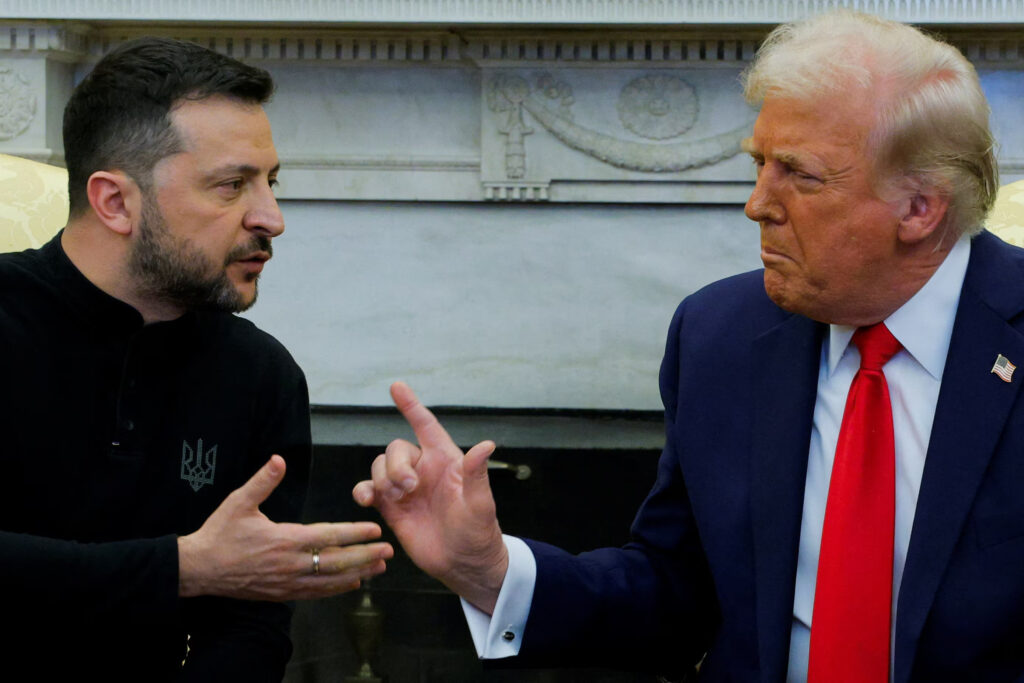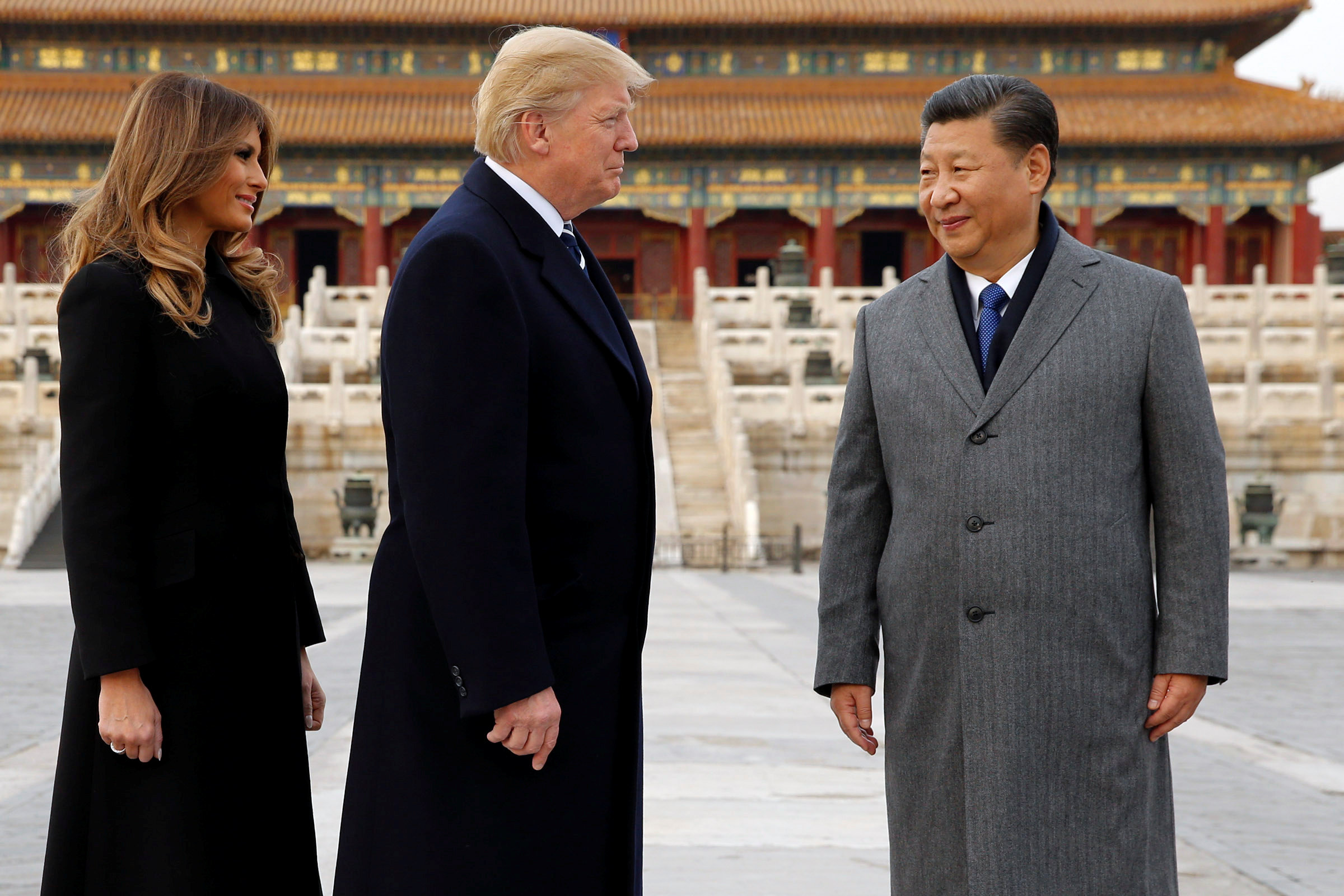The Trump administration’s reported suspension of military aid to Ukraine has sparked a messy information war that reveals as much about Washington’s internal dysfunction as it does about America’s foreign policy priorities. What emerges from the contradictory statements and bureaucratic doublespeak is a troubling picture of an administration that either can’t get its story straight or is deliberately sowing confusion while Ukrainian soldiers face Russian advances with dwindling supplies.
The initial Politico report that triggered this controversy suggested a comprehensive freeze on weapons shipments already positioned in Poland and ready for delivery. Yet the official response has been a masterclass in governmental obfuscation. Pentagon spokesman Sean Parnell dismissed the entire narrative as “flat-out wrong,” while simultaneously offering rambling non-answers about “frameworks” and “peace through strength.” Meanwhile, the White House took a different tack, essentially confirming the decision while framing it as putting “America’s interests first.” State Department officials added their own spin, insisting this was merely “one situation” rather than a broader policy shift.
This cacophony of competing explanations would be almost comical if the stakes weren’t so high. Either these officials are operating from entirely different playbooks, or someone is deliberately misleading the public about a decision that will have immediate consequences on the battlefield.
What’s particularly striking about this controversy is how it exposes the gap between Trump’s approach to different conflicts. When it came to Iran, the administration moved with decisive speed, deploying B-2 stealth bombers and conducting precision strikes that some in Congress argued should have required a declaration of war. Yet when it comes to supporting Ukraine against Russian aggression, we’re suddenly concerned about depleting stockpiles and future contingencies.
The Wall Street Journal’s editorial board, hardly a bastion of liberal opposition, delivered a scathing assessment that cuts to the heart of the matter. Their characterization of Trump as “begging the dictator pretty please for a truce” while “displaying weakness against Russia” represents a remarkable break from typical conservative support for Republican foreign policy. When your own ideological allies are questioning your resolve, you’ve got a serious credibility problem.
The specific weapons being withheld tell their own story. According to Pentagon correspondent Tom Bowman’s reporting, we’re talking about quantities that defense analysts describe as modest: 8,000 artillery rounds representing just 20% of current monthly production, 92 air-to-air missiles that are being phased out anyway, and 25 Stinger missiles. These aren’t the kinds of numbers that would meaningfully impact American readiness for a hypothetical future conflict with China.
Defense analyst Shashank Joshi’s observation deserves particular attention: how exactly would transferring these relatively small quantities “materially affect US readiness in a serious way”? The answer appears to be that it wouldn’t. Which raises uncomfortable questions about the real motivations behind this decision.
What’s more troubling is the apparent disconnect between the administration’s stated goals and its actions. If Trump genuinely wants to end the war quickly and minimize casualties, as his officials claim, then weakening Ukraine’s negotiating position seems counterproductive. History suggests that dictators like Putin respond to strength, not appeasement. By reducing Ukraine’s military capabilities while apparently applying no corresponding pressure on Moscow, the administration risks prolonging the conflict it claims to want to end.
The timing of Trump’s phone call with Putin adds another layer of complexity. The fact that, according to Russian sources, the suspension of arms deliveries wasn’t even discussed suggests either poor communication between allies or a deliberate decision to avoid what should be a central issue in any ceasefire negotiations. Putin has consistently demanded an end to Western military aid as part of any peace agreement, so sidestepping this topic seems strategically questionable.
On the battlefield, the human cost of these policy debates continues to mount. Recent strikes in Pavlata killed two civilians and wounded dozens more, while Ukrainian forces managed to eliminate a senior Russian commander in Kursk. These tactical developments underscore the reality that this remains an active war where weapons deliveries can have immediate consequences for both military outcomes and civilian casualties.
The emergence of new tactical innovations, like the apparent use of unmanned surface vessels as drone carriers in the Black Sea, demonstrates how rapidly this conflict continues to evolve. Both sides are constantly adapting their approaches, making arguments about preserving weapons for future, hypothetical conflicts seem increasingly disconnected from present realities.
Frankly, what we’re witnessing appears to be a fundamental misunderstanding of how deterrence works. By signaling uncertainty about America’s commitment to supporting allies under attack, the administration risks inviting exactly the kind of aggressive behavior it claims to want to prevent. Putin’s track record suggests he’s more likely to interpret weakness as opportunity rather than respond to diplomatic overtures with good faith negotiations.
The administration’s defenders argue this is all part of a larger strategy to force negotiations and end the bloodshed. Perhaps. But effective diplomacy requires credible backing, and it’s hard to see how undermining Ukraine’s military position strengthens America’s hand in any eventual peace talks. You can’t negotiate from a position of strength while simultaneously weakening your negotiating partner.
What emerges from this confusing episode is a sense that the administration is making foreign policy decisions based more on domestic political considerations than strategic analysis. The desire to appear different from the previous administration’s approach is understandable, but foreign policy shouldn’t be conducted as performance art.
The stakes here extend well beyond Ukraine. Allies around the world are watching to see whether American commitments can be trusted, while adversaries are taking notes about Washington’s resolve. The mixed messages and bureaucratic confusion surrounding this decision send exactly the wrong signal at a moment when clarity and strength are essential.
If the administration has a coherent strategy for ending the war in Ukraine, it needs to articulate it clearly rather than hiding behind contradictory statements and bureaucratic mumbling. And if it doesn’t have such a strategy, then perhaps it’s time to reconsider whether now is the right moment to reduce support for a democratic ally fighting for its survival against an authoritarian aggressor.
The cost of getting this wrong extends far beyond any single weapons shipment. It goes to the heart of whether America can still be counted on to stand with its allies when the chips are down.



